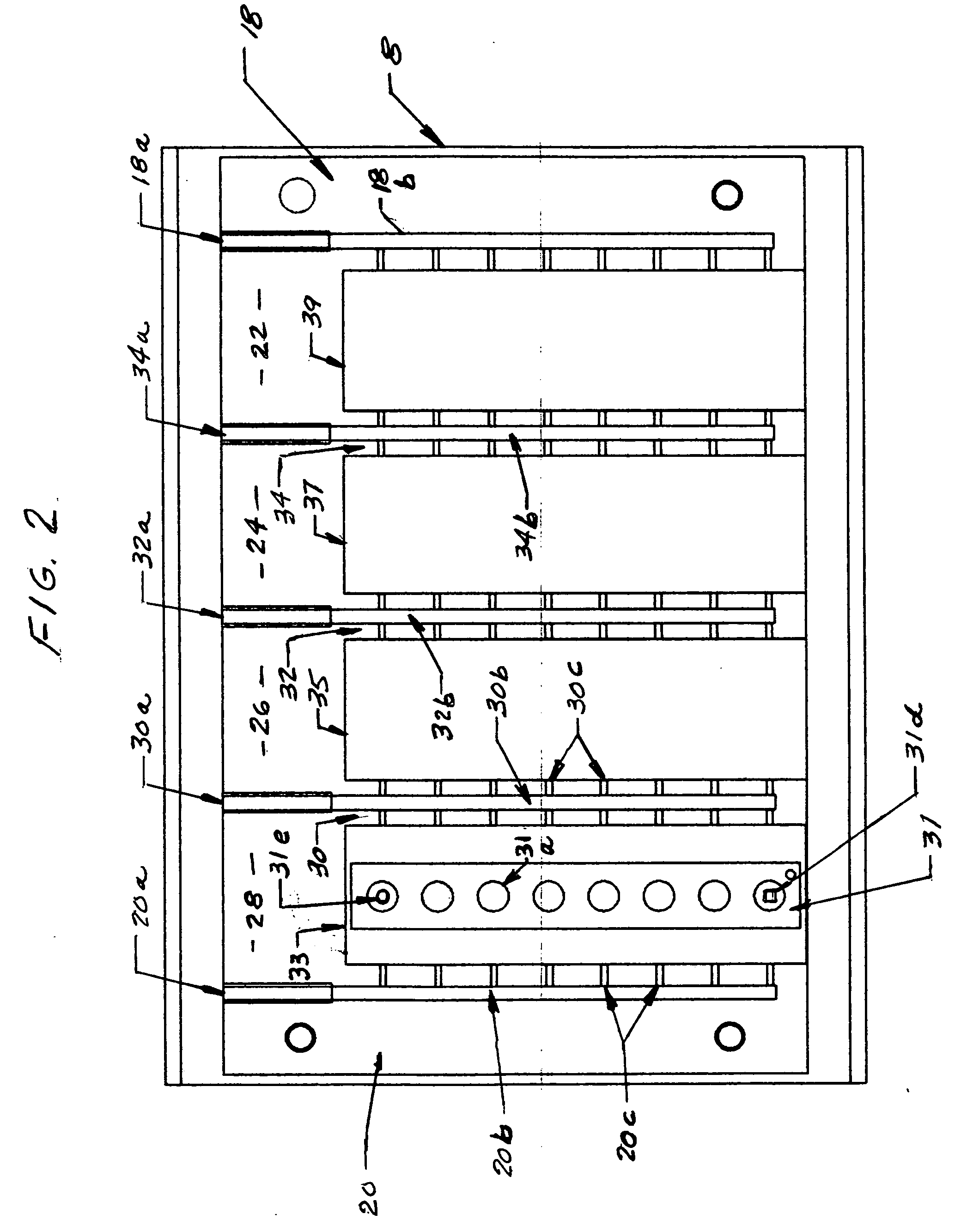Controlled evaporation, temperature control and packaging for optical inspection of biological samples
a biological sample and temperature control technology, applied in the field of microarrays, can solve the problems of evaporation of reaction solution, no effective mixing of analyte, fluid flow, etc., and achieve the effects of reducing reaction time, increasing the effective analyte concentration, and reducing volume of reaction solution
- Summary
- Abstract
- Description
- Claims
- Application Information
AI Technical Summary
Benefits of technology
Problems solved by technology
Method used
Image
Examples
example
Assay Results Using Tape
The Corning tape was evaluated by comparing results obtained using a bead array of oligonucleotide probes hybridized with target oligonucleotides. The signal intensity in FIGS. 4A and 4B represent the label associated with the target oligonucleotide bound by probes displayed on beads within the array. Each cluster of beads in the array generates the signals shown by the larger bars in FIGS. 4A and 4B, the smaller bars in FIGS. 4A and 4B representing background.
PUM
| Property | Measurement | Unit |
|---|---|---|
| temperature | aaaaa | aaaaa |
| volume | aaaaa | aaaaa |
| humidity | aaaaa | aaaaa |
Abstract
Description
Claims
Application Information
 Login to View More
Login to View More - R&D
- Intellectual Property
- Life Sciences
- Materials
- Tech Scout
- Unparalleled Data Quality
- Higher Quality Content
- 60% Fewer Hallucinations
Browse by: Latest US Patents, China's latest patents, Technical Efficacy Thesaurus, Application Domain, Technology Topic, Popular Technical Reports.
© 2025 PatSnap. All rights reserved.Legal|Privacy policy|Modern Slavery Act Transparency Statement|Sitemap|About US| Contact US: help@patsnap.com



